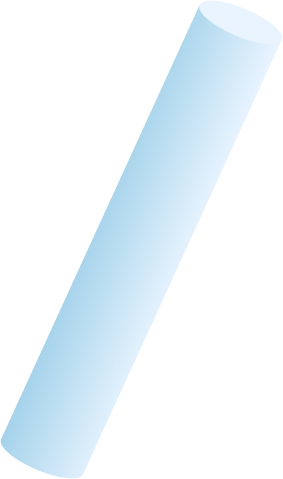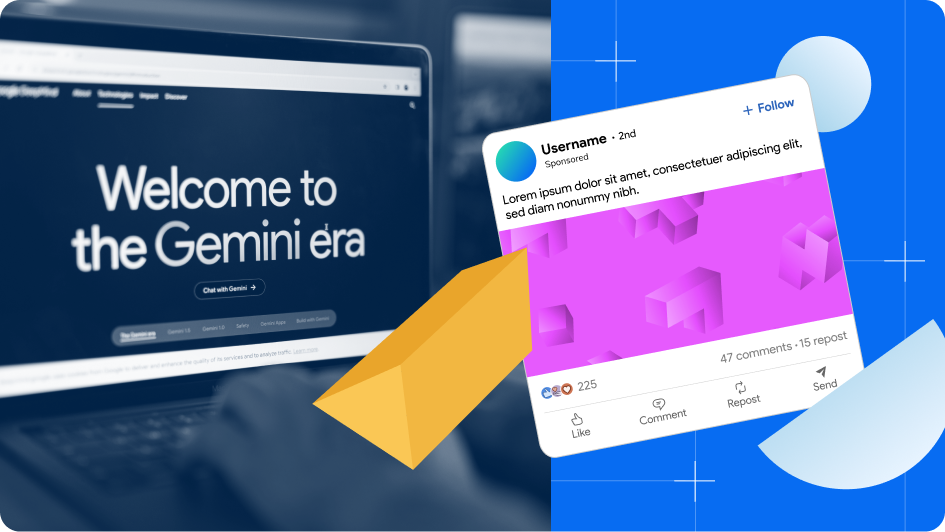The transition from December to January offers a moment to breathe as major ad platforms typically slow down updates during the holidays. Even one of our favorite industry informants, Ginny Marvin, went on a well-deserved break over the holidays. This gives us a chance to reflect on what has been an exciting year behind us and what lies ahead.
Let’s first reflect on 2024 alongside Google’s own end-of-year recap of its major updates. We’ve narrowed down this giant list of changes to our favorite updates and what’s most pertinent to B2B marketers. After you get up to speed on Google, continue reading to find what’s happening over at LinkedIn.
Google’s 2024 Updates for B2B: AI-Everything
It was during the 2024 Google Marketing Live where one of the hosts joked about the number of times they would say “Generative-AI” in the keynote. What AI-powered features on Google actually turned out to be useful?
AI-powered tools are now integrated throughout all of Google Ads:
Gen-AI Campaign Creation
What it is: Enter a product URL and, if needed, provide additional context. Google’s AI analyzes this information to generate keyword suggestions and ad copy recommendations.
Our take: The AI leverages the metadata from your URL and website, so it’s important to ensure this information is accurate and well-optimized. For many of our clients with niche or complex products, the tool’s suggestions were not always accurate but occasionally generated a few useful ideas for keyword categories and ad copy.
AI-Powered Broad Match
What it is: Google’s AI enhancements to Broad match have made it more compatible with smart bidding, though challenges remain.
Our take: Although it’s become a lot more accurate over the years, broad match is still broad and will miss and waste more money than a well-researched collection of phrase and exact match keywords.

Source: Google Ads Support
Demand Gen Campaigns (yes, they’re AI-powered too)
What it is: Although touted as a new campaign type, this is simply a revamped Discovery Ads campaign with a misleading name.
Our take: if search campaigns are maxed out and you have budget to spare, this is often the safer option for B2B advertisers to experiment with rather than Performance Max. It enables a more omnichannel experience with image and video ad inventory on Google’s best properties outside of Search: Discover, YouTube, and Gmail, avoiding the unreliable GDN.
As you’ve probably noticed, we’ve taken a bit of an irreverent tone toward Google’s updates so far. Although these AI-powered tools (and many more we’ve skipped) are nice to have and worth testing out depending on your paid media needs, at the moment, they still require a hefty amount of expert human touch to steer the bot.
However, to avoid eating our own words: given how quickly Google transformed from the laughing stock of the AI race after ChatGPT’s launch in November 2022 to reclaiming its position as a frontrunner in AI innovation (hello Gemini Advanced), I wouldn’t bet against these and other AI-powered features becoming staples.
LinkedIn in 2025: Stay Native or Be Left Behind
We saw a number of needed transparency updates throughout 2024 that we plan to review in more detail soon. However, LinkedIn’s recent updates suggest that they’re not slowing down in the direction they’ve always been going: native and on site.
What do we mean by this?
If you’re taking folks off of LinkedIn more than you’re keeping them on the site, you will start to fall behind savvier brands sticking to LinkedIn’s native features, building social media rapport and garnering more visibility.
Let’s walk through some recent platform updates and why they matter:
LinkedIn Newsletter and Article Ads
What it is: Advertise your LinkedIn-native newsletter or article as an in-feed ad.
Why: Creating articles or newsletters on LinkedIn is free. If your organization already runs an email newsletter or regularly publishes blogs, you can easily replicate this strategy on LinkedIn by creating native articles and newsletters directly on the platform. Additionally, you may gain an in-platform SEO boost, which can enhance your search visibility outside of LinkedIn.
LinkedIn Live Event ads
What it is: advertise your live events directly on LinkedIn before and even during the event livestream.
Why: Adding your livestream event to LinkedIn is free to do. Furthermore, this is now one of the only company page activities that gets heavily broadcasted to your page followers for free organically. Lastly, LinkedIn gives you insightful behavioral reporting against event interaction which can be broken down by pre, during, or post livestream event. Thus, this functionality is a no-brainer if you frequently post live webinars and should become a standard part of your event promotion process.

Source: LinkedIn Marketing Solutions
LinkedIn Thought Leader Ads
What it is: Advertise video content or posts from executives or subject matter experts within your organization directly in the LinkedIn feed.
Why: People trust people more than brands. If SMEs and leaders within your company already create thoughtful content for your industry, these ads let you repurpose it with expanded reach, all while leveraging LinkedIn’s precise targeting. This ad type broke out in 2024, delivering the highest engagement rates of any new format in recent years.
What’s the common thread among these updates?
LinkedIn is pushing for advertisers to bring their content directly onto its platform. By encouraging the use of native features, LinkedIn is prioritizing content that keeps users engaged on-site.
The business incentive is clear: the more time and engagement users spend on LinkedIn, the more opportunities they have to interact with ads, contributing to the $16 billion in ad revenue Microsoft generated from LinkedIn last year.
At DRA, we’ve seen reps actively offer incentives to encourage adoption of these newer ad formats, particularly those underutilized or designed for native engagement. It’s a strategy that aligns with LinkedIn’s goals and likely earns algorithmic preference over traditional, traffic-focused ads driving users off the platform.
Wrapping Up: Play to Platform Strengths for 2025
As we look back on 2024, it’s clear that both Google and LinkedIn have doubled down on their distinct strengths—AI innovation for Google and native engagement for LinkedIn. For B2B advertisers, the lesson is to stay adaptable and ahead of these evolving priorities.
Google’s AI-powered tools may still require a steady human hand, but they hint at a future where automation will increasingly shape campaign management. Meanwhile, LinkedIn’s push for native content signals an ongoing shift: the brands that invest in platform-specific strategies, like newsletters, live events, and thought leader content, will build stronger connections with their audience while maximizing visibility and ROI.
Bottom line: if you want to win, play by the platforms’ rules—whether that’s teaching Google’s AI not to waste your money or keeping LinkedIn happy with native content. For Google, this means embracing AI thoughtfully; for LinkedIn, it means creating content that thrives within its ecosystem.
As we head into 2025, take this moment to evaluate your current strategies, test these newer tools, and find the balance between innovation and fundamentals that works best for your campaigns. The advertising landscape is evolving faster than ever—those who adapt will not only keep up but lead the way.




